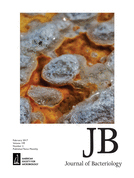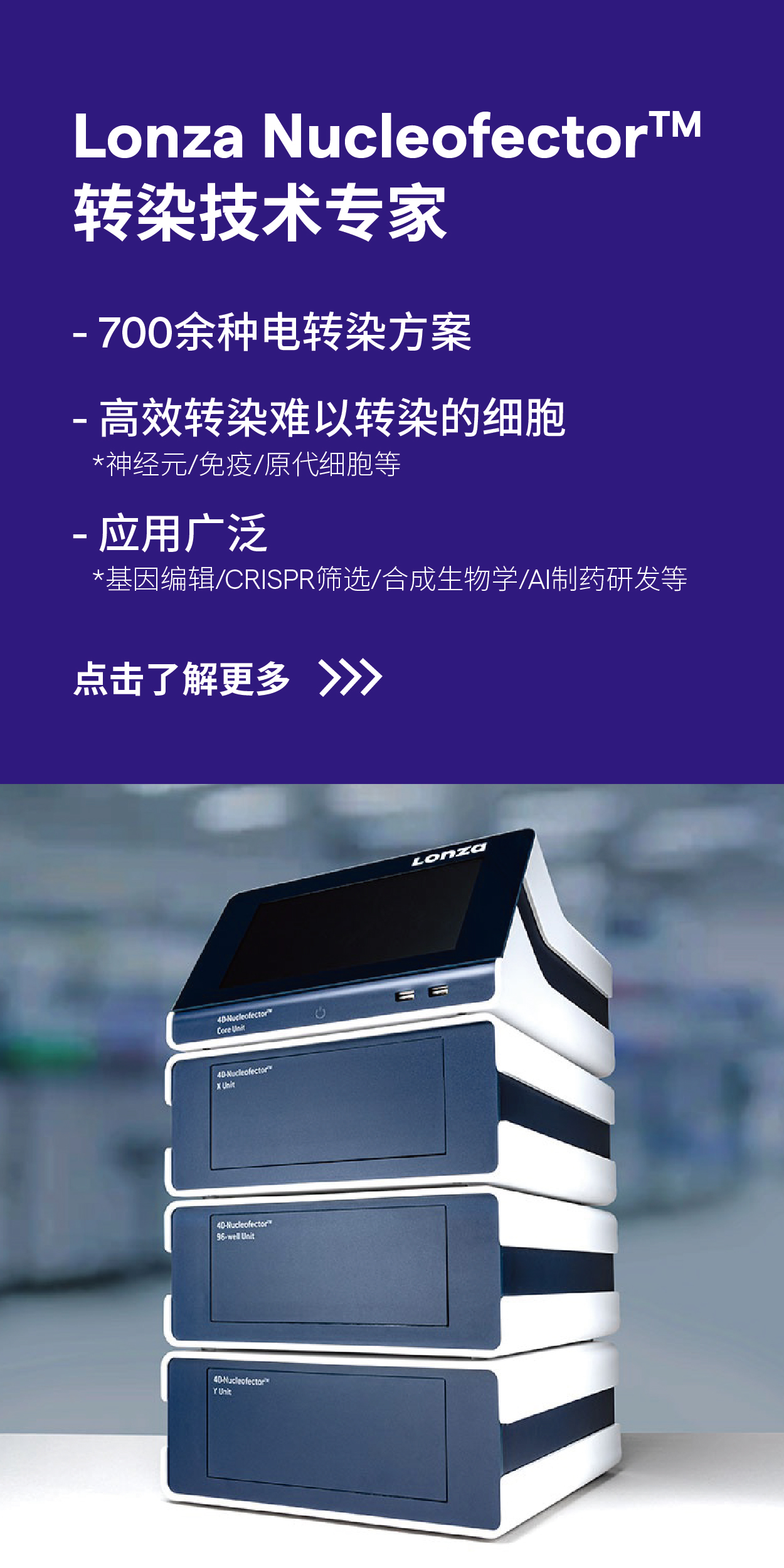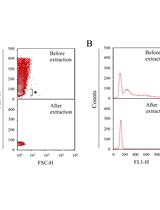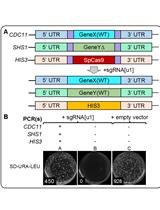- EN - English
- CN - 中文
CRISPR/Cas9 Editing of the Bacillus subtilis Genome
枯草芽孢杆菌基因组的CRISPR/Cas9编辑
发布: 2017年04月20日第7卷第8期 DOI: 10.21769/BioProtoc.2272 浏览次数: 21445
评审: Modesto Redrejo-RodriguezJudd F HultquistVinay Panwar

相关实验方案
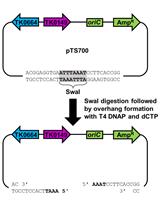
超嗜热古细菌Thermococcus kodakarensis的无标记基因编辑
Alexandra M. Gehring [...] Thomas J. Santangelo
2017年11月20日 8532 阅读
Abstract
A fundamental procedure for most modern biologists is the genetic manipulation of the organism under study. Although many different methods for editing bacterial genomes have been used in laboratories for decades, the adaptation of CRISPR/Cas9 technology to bacterial genetics has allowed researchers to manipulate bacterial genomes with unparalleled facility. CRISPR/Cas9 has allowed for genome edits to be more precise, while also increasing the efficiency of transferring mutations into a variety of genetic backgrounds. As a result, the advantages are realized in tractable organisms and organisms that have been refractory to genetic manipulation. Here, we describe our method for editing the genome of the bacterium Bacillus subtilis. Our method is highly efficient, resulting in precise, markerless mutations. Further, after generating the editing plasmid, the mutation can be quickly introduced into several genetic backgrounds, greatly increasing the speed with which genetic analyses may be performed.
Keywords: Genome editing (基因组编辑)Background
Bacillus subtilis is a highly tractable, Gram-positive bacterium. It is amenable to genetic studies, using a variety of vectors to quickly and efficiently introduce mutations by homologous recombination. Although there are many different methods to introduce mutations in B. subtilis, each method has its limitations. A simple and straightforward method to make a mutation in B. subtilis is gene disruption, wherein a plasmid is integrated within a gene of interest (Vagner et al., 1998). The major limitations include: 1) the potential for polar effects by disrupting an operon; 2) introduction and retention of foreign DNA; 3) once an antibiotic resistance cassette is used, the researcher has to use a different cassette if a given mutation is to be studied in the context of other mutations; and 4) the method is limited to targeting an entire gene and cannot yield more precise point mutations. Another method employed in B. subtilis genetic studies is allelic replacement, wherein a gene of interest is replaced with an antibiotic resistance cassette (Guerout-Fleury et al., 1996). Although polar effects should be reduced by simply replacing one gene with another, this method still suffers from several limitations described above. Recently, a gene deletion library was constructed which allows for the removal of the antibiotic resistance cassette (strains are available from the Bacillus genetic stock center). As a result, researchers can use the same method for many mutations because the resistance cassette is removed after each allelic replacement. The method is an improvement, although it is still limited to gene deletions and cannot be used for point mutations. Finally, there are two methods to introduce markerless mutations in B. subtilis including point mutations. One method utilizes the upp gene as a counter-selectable marker (Fabret et al., 2002), and the other uses a plasmid called pMad (Arnaud et al., 2004) or its derivative pMiniMad which allows for mutation integration after removal of the integrating vector (Patrick and Kearns, 2008). Although these methods can introduce precise point mutations, our experience (making four gene deletions and inserting gfp at one genetic locus) using the latter method (Arnaud et al., 2004; Patrick and Kearns, 2008) is that it is quite time consuming with a success rate that is not very high (on average, about 12% success). Although we do not have experience with the upp counter selection method, the authors engineered a GGA→GAC change in the lexA gene and reported the intended change in sequence for three out of four screened isolates with the incorrect isolate yielding multiple mutations in the targeted lexA gene (Fabret et al., 2002). A major drawback, though, is that the method requires deletion of the endogenous upp gene in B. subtilis, which requires that the Δupp strain be used as the new ‘wild-type’ control. Therefore, although the methods described above work, we were in search of a genome editing method with a higher efficiency that also required less time at the bench. These criteria prompted us to adapt a CRISPR/Cas9 genome editing system (Jiang et al., 2013) to B. subtilis (Burby and Simmons, 2017). CRISPR/Cas9 can be used to introduce a variety of mutations including gene deletions, fusions, and even point mutations (Sternberg and Doudna, 2015). Further, by constructing the editing system on a single broad host-range plasmid with a temperature sensitive origin of replication, all vector DNA introduced during the procedure can easily be removed. Success rates have proven to be much higher for point mutations and small, gene-sized deletions (often over 80% success, but 100% success is not atypical), reducing the number of isolates that need to be screened. Although this method solves many of the limitations of the contemporary methods, our CRISPR/Cas9 genome editing system is limited by the requirement of a proto-spacer adjacent motif or PAM sequence (NGG in our system), and the requirement of two cloning steps. Nonetheless, the ability to make a variety of markerless mutations, coupled with the rapidity with which the mutations can be transferred to different genetic backgrounds still provides a significant improvement over current methods for genome editing in B. subtilis. The system we have developed may also be applicable to other Gram-positive bacteria with little or no manipulation of the DNA reagents described herein.
Materials and Reagents
- Pipette tips:
with boxes (USA Scientific, catalog numbers: 1161-3800 ; 1161-1800 and 1161-1820 )
for refills (USA Scientific, catalog numbers: 1161-3700 ; 1161-1700 and 1161-1720 ) - Microfuge tubes (Fisher Scientific, catalog number: 02-681-320 )
- PCR tubes (Fisher Scientific, catalog number: 14-230-225 )
- Wooden sticks for colony purification/bacteria re-streaking (Ted Pella, catalog number: 1282 )
- Round bottom culture tube (Fisher Scientific, catalog number: 14-956-6D )
- Cryo-vials (Thermo Fisher Scientific, Thermo ScientificTM, catalog number: 368632 )
- Cryo-vial caps (Thermo Fisher Scientific, Thermo ScientificTM, catalog number: 375930 )
- Silica spin columns for gel extraction and plasmid mini-prep (Epoch Life Science, catalog number: 1920250 )
- Petri dishes (Fisher Scientific, catalog number: FB0875712 )
- pPB41 plasmid (plasmid and sequence available from the Bacillus Genetic Stock Center upon request; http://www.bgsc.org)
- pPB105 plasmid (plasmid and sequence available from the Bacillus Genetic Stock Center upon request; http://www.bgsc.org)
- TOP10 Escherichia coli competent cells (Thermo Fisher Scientific, InvitrogenTM, catalog number: C404010 )
- MC1061 Escherichia coli competent cells (Strain number PEB336, available upon request)
- BsaI-HF with accompanying 10x Cutsmart buffer (New England Biolabs, catalog number: R3535L )
- Calf intestinal alkaline phosphatase (CIP) (New England Biolabs, catalog number: M0290L )
- Isopropanol (Fisher Scientific, catalog number: A451-4 )
- Ultra-pure distilled H2O (Thermo Fisher Scientific, InvitrogenTM, catalog number: 10977-15 )
- T4 DNA ligase with accompanying 10x T4 ligase buffer (New England Biolabs, catalog number: M0202L )
- T4 polynucleotide kinase (New England Biolabs, catalog number: M0201S )
- Q5 DNA polymerase (New England Biolabs, catalog number: M0491L )
- PCR primers (synthesized by Integrated DNA Technologies)
- Primers to amplify pPB41
- oPEB217: 5’-GAACCTCATTACGAATTCAGCATGC
- oPEB218: 5’-GAATGGCGATTTTCGTTCGTGAATAC
- Primers to amplify CRISPR/Cas9
- oPEB232: 5’-GCTGTAGGCATAGGCTTGGTTATG
- oPEB234:
5’-GTATTCACGAACGAAAATCGCCATTCCTAGCAGCACGCCATAGTGACTG - Primer to sequence CRISPR insert
oPEB253: 5’-GAAGGGTAGTCCAGAAGATAACGA - Primer to sequence 5’ side of editing template
oPEB227: 5’-CCGTCAATTGTCTGATTCGTTA - Example upstream editing template primers
- oPEB237:
5’-GCATGCTGAATTCGTAATGAGGTTCAAAACGGCAGAGTATACAGAGGAG - oPEB238: 5’-CCGGTTCCTTTTCCAGCGATGATTGACACTCTTGGATATCCG
- Example downstream editing template primers
- oPEB239: 5’-AAGAGTGTCAATCATCGCTGGAAAAGGAACCGGCGCTTTAAG
- oPEB240: 5’-GCATAACCAAGCCTATGCCTACAGCtaggaagaagaatcatttcgaagc
- Example genotyping primer for H743A mutation in mutS2
- oPEB262: 5’- GGATATCCAAGAGTGTCAATCATCGCT
- Glycerol (Fisher Scientific, catalog number: BP229-4 )
- Tris base (Fisher Scientific, catalog number: BP152-5 )
- Glacial acetic acid (Fisher Scientific, catalog number: A38-212 )
- EDTA (Fisher Scientific, catalog number: BP120-1 )
- Sodium chloride (NaCl) (Fisher Scientific, catalog number: S271-10 )
- Tryptone (BD, BactoTM, catalog number: 211699 )
- Yeast extract (BD, BactoTM, catalog number: 212720 )
- Ampicillin (Fisher Scientific, catalog number: BP1760-25 )
- Spectinomycin (MP Biomedicals, catalog number: 0 215206725 )
- Chloramphenicol (Fisher Scientific, catalog number: BP904-100 )
- Agar (Acros Organics, catalog number: 400400050 )
- Agarose (Fisher Scientific, catalog number: BP1356-500 )
- Ethidium bromide (Sigma-Aldrich, catalog number: E8751-25G )
- Guanidine thiocyanate (Fisher Scientific, catalog number: BP221-1 )
- Guanidine HCl (Fisher Scientific, catalog number: BP178-1 )
- Ethanol (Decon Labs, catalog number: 2701 )
- Hydrochloric acid (HCl) (Fisher Scientific, catalog number: A144-212 )
- Magnesium chloride (MgCl2) (Sigma-Aldrich, catalog number: M8266-100G )
- 100 mM dNTP set (Thermo Fisher Scientific, InvitrogenTM, catalog number: 10297018 )
- Dithiothreitol (DTT) (Fisher Scientific, catalog number: BP172-25 )
- β-nicotinamide adenine dinucleotide (NAD+) (Acros Organics, catalog number: 124530010 )
- T5 exonuclease (New England Biolabs, catalog number: M0363S )
- Phusion DNA polymerase (New England Biolabs, catalog number: M0530L )
- Taq DNA ligase (New England Biolabs, catalog number: M0208L )
- Magnesium sulfate (MgSO4) (Fisher Scientific, catalog number: M65-500 )
- Potassium phosphate dibasic (K2HPO4) (Fisher, catalog number: BP363-1 )
- Potassium phosphate monobasic (KH2PO4) (Fisher Scientific, catalog number: BP362-1 )
- Trisodium citrate dihydrate (C6H5Na3O7·2H2O) (Fisher Scientific, catalog number: BP327-1 )
- Glucose (Sigma-Aldrich, catalog number: G8270-1KG )
- Tryptophan (Fisher Scientific, catalog number: BP395-100 )
- Phenylalanine (Fisher Scientific, catalog number: BP391-100 )
- Potassium hydroxide (KOH) (Fisher Scientific, catalog number: P250-500 )
- Ferric ammonium citrate (Sigma-Aldrich, catalog number: F5879 )
- Potassium aspartate (Sigma-Aldrich, catalog number: A6558 )
- PEG-8000 (Dot Scientific, catalog number: DSP48080-500 )
- 50x TAE (see Recipes)
- 1x TAE (see Recipes)
- LB media (see Recipes)
- LB agar plates (see Recipes)
- 100 mg/ml ampicillin stock (see Recipes)
- 100 mg/ml spectinomycin stock (see Recipes)
- 5 mg/ml chloramphenicol stock (see Recipes)
- 70% (v/v) ethanol (see Recipes)
- 1% agarose gel (see Recipes)
- QG buffer (see Recipes)
- PB buffer (see Recipes)
- Tris HCl, pH 7.5 (see Recipes)
- PE buffer (see Recipes)
- 10x annealing buffer (see Recipes)
- 5x isothermal reaction buffer (Gibson, 2011) (see Recipes)
- 2x Gibson master mix (Gibson, 2011) (see Recipes)
- 1 M MgSO4 (see Recipes)
- LM media (LB media + 3 mM MgSO4) (see Recipes)
- 10x PC buffer (see Recipes)
- MD media (see Recipes)
- 0.1 N KOH (see Recipes)
- 100 mg/ml tryptophan stock (see Recipes)
- 100 mg/ml phenylalanine stock (see Recipes)
- 2.2 mg/ml ferric ammonium citrate stock (see Recipes)
- 100 mg/ml potassium aspartate stock (see Recipes)
Equipment
- Incubator (Napco, model: 320 )
- Dry heat block (Fisher Scientific, model: Fisher ScientificTM IsotempTM Digital Dry Baths/Block Heaters , catalog number: 11-718-2)
- Pipettes (Eppendorf, catalog number: 022575442 )
- Centrifuge (Eppendorf, model: 5424 )
- Thermocycler (Eppendorf, model: 6325 )
- Electrophoresis apparatus (Bio-Rad Laboratories, model: Mini-Sub® Cell GT Horizontal Electrophoresis System , catalog number: 1704406)
- Power source for electrophoresis (Bio-Rad Laboratories, model: PowerPacTM Basic Power Supply , catalog number: 1645050)
- Roller drum (Eppendorf, New Brunswick, model: TC-7 )
- Milli-Q H2O dispenser (Thermo Fisher Scientific, Thermo ScientificTM, model: BarnsteadTM GenPureTM Pro , catalog number: 50131950)
- Microwave (Panasonic, catalog number: NNS954WFR )
- Autoclave
Software
- Online tool Primer3 (Koressaar and Remm, 2007; Untergasser et al., 2012)
- Oligocalc (Kibbe, 2007)
Procedure
文章信息
版权信息
© 2017 The Authors; exclusive licensee Bio-protocol LLC.
如何引用
Burby, P. E. and Simmons, L. A. (2017). CRISPR/Cas9 Editing of the Bacillus subtilis Genome. Bio-protocol 7(8): e2272. DOI: 10.21769/BioProtoc.2272.
分类
微生物学 > 微生物遗传学 > DNA > 染色体
微生物学 > 体内实验模型 > 细菌
分子生物学 > DNA > 诱/突变
您对这篇实验方法有问题吗?
在此处发布您的问题,我们将邀请本文作者来回答。同时,我们会将您的问题发布到Bio-protocol Exchange,以便寻求社区成员的帮助。
Share
Bluesky
X
Copy link


